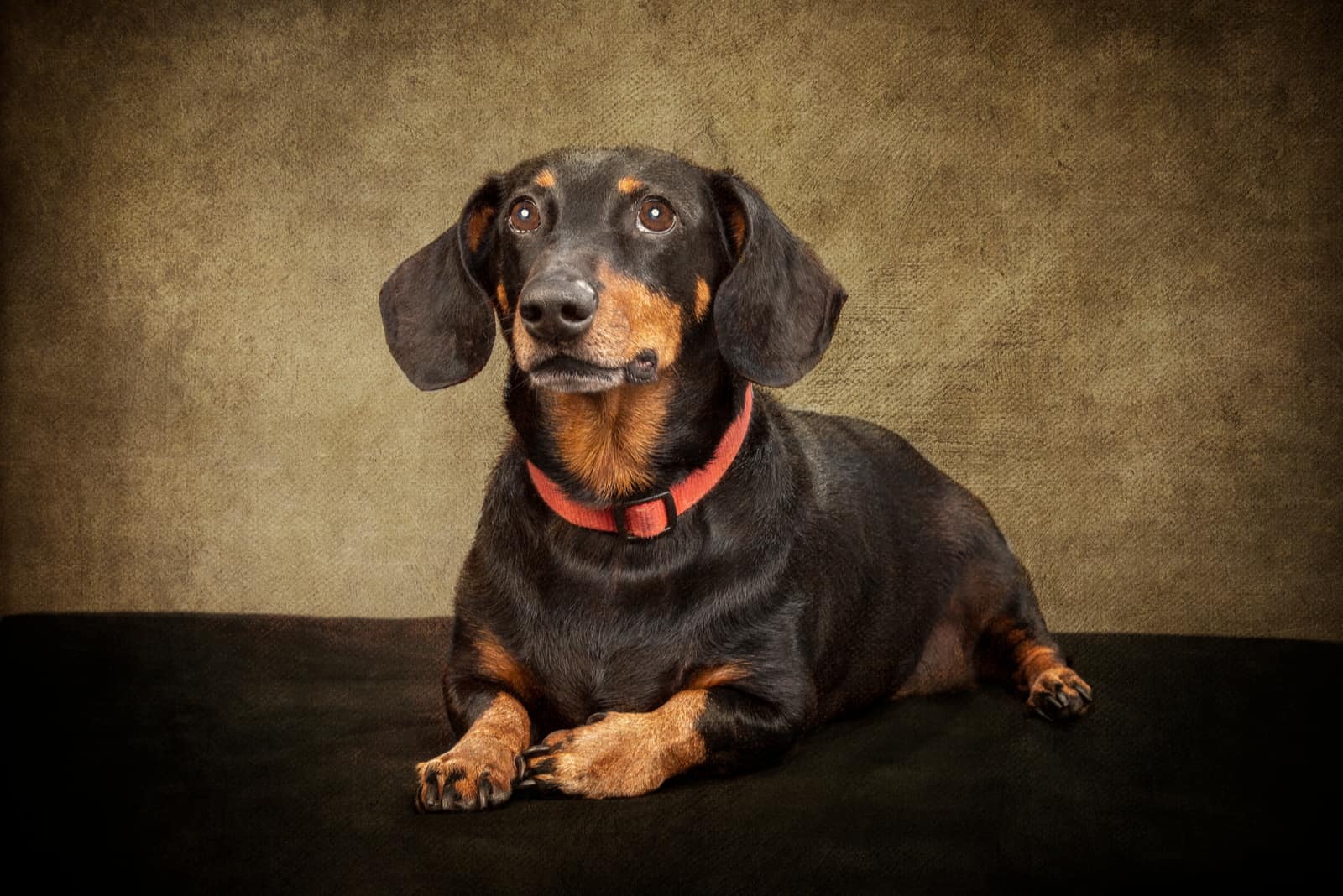Although some people claim that there’s no such thing as a Teacup Dachshund, the reality is that there, in fact, is such a thing.
If you’re an avid canine enthusiast, you probably already know all there is to know about the Teacup Miniature Dachshund – but if you’re like most people, you’ve probably only heard of the breed or seen pictures of Mini Dachshund puppies online, and you might be wondering what they’re like, how they are bred, what makes them unique, etc.
The truth is, the Teacup Dachshund is not a separate breed in itself, but is actually a smaller version of a purebred Miniature Dachshund.
The term ‘Teacup’ is used to describe dog breeds that are so tiny that they could fit into a teacup – breeds like the Teacup Yorkie, the Teacup Chihuahua, the Teacup Cavalier, the Teacup Pomeranian, and, of course, the Teacup Dachshund (among other Teacup Dog breeds) fit into this category.
The Dachshund (also colloquially called the Doxie, the Weiner dog, or the Sausage Dog) is a German hunting dog characterized by a long body, comically short legs, and long, floppy ears – all of which are traits that have long ago earned it the nickname Wiener Dog.
Teacup Dachshunds (being a smaller variation of the Miniature Dachshund) stand at only five to six inches at the withers, and weigh less than seven pounds when fully grown – and while it’s true that small dog breeds tend to live longer than larger ones, most Teacup dog breeds are prone to some serious health problems caused by their small size.
So, if you’re interested in learning all there is to know about this tiny breed, read on to find out what exactly makes Teacup Miniature Dachshunds unique.
The Miniature Dachshund’s Origin
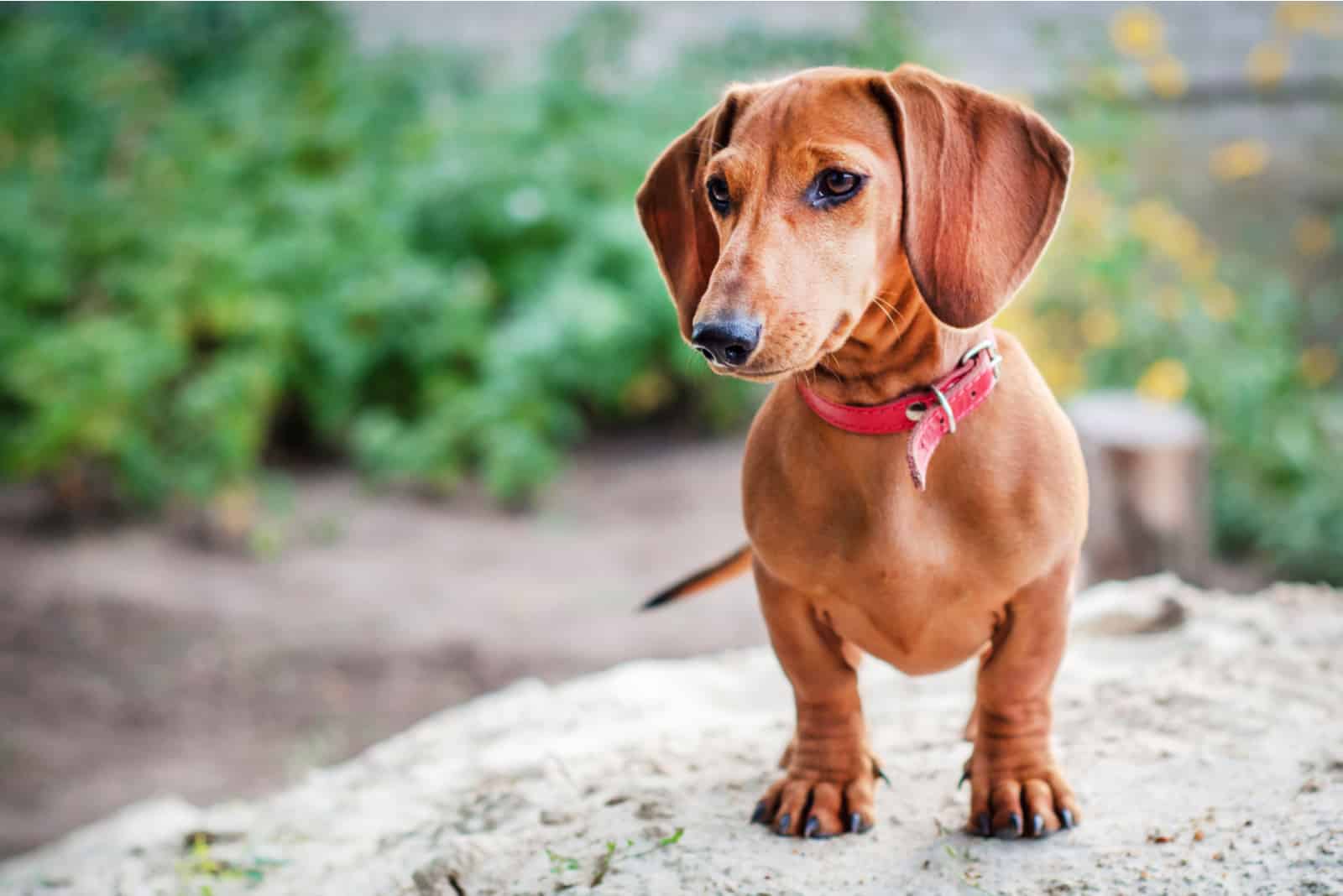
The Miniature Dachshund was originally developed in the late 1800s in Germany by combining Standard Dachshunds with smaller dogs like Terriers and Pinschers.
According to the Dachshund growth chart – when fully grown, Standard Dachshunds weigh between 16 and 32 pounds, and stand between eight and nine inches tall.
However, German hunters at the time needed a smaller dog than the Standard Dachshund… one that could fit into even smaller rabbit holes in order to successfully flush their prey out.
Breeders then selectively bred the smallest dogs out of each litter in order to gradually develop generation after generation of comparatively smaller dogs – resulting in the Miniature Dachshund dog as we know it today.
The Toy And Teacup Miniature Dachshunds’ Origins
Toy Dachshunds and Teacup Miniature Dachshunds were subsequently developed from Miniature Dachshunds via several different methods – which we’ll get to shortly.
The Dachshund breed, in general, is known for being an intelligent, friendly, well-tempered, rarely aggressive, affectionate, and obedient dog breed that loves to be around its owner – which is why Doxies are so popular and make wonderful family companions.
That said, even though Miniature Dachshunds are small enough as they are, there was a growing demand for even smaller versions of Miniature dog breeds during the ‘90s – which is around the time when the first Teacup Miniature Dachshunds were developed to meet the demand.
It’s fairly obvious why dogs like the Teacup Dachshund are so popular – their incredibly tiny statures coupled with a wonderful temperament is probably the reason behind the Teacup Dachshund’s ever-growing popularity.
Small dogs take up less space, eat less, exercise less, and love equally as much as larger dogs – but one downside to owning such a tiny dog is that they’re often prone to certain health problems mainly due to the fact that they’re so small.
This is why it’s crucial to know all of the pros and cons (especially the myriad of health concerns associated with Teacup dog breeds) before deciding to buy a Teacup Dachshund puppy.
What’s The Difference Between Teacup, Toy, And Miniature Dachshunds?
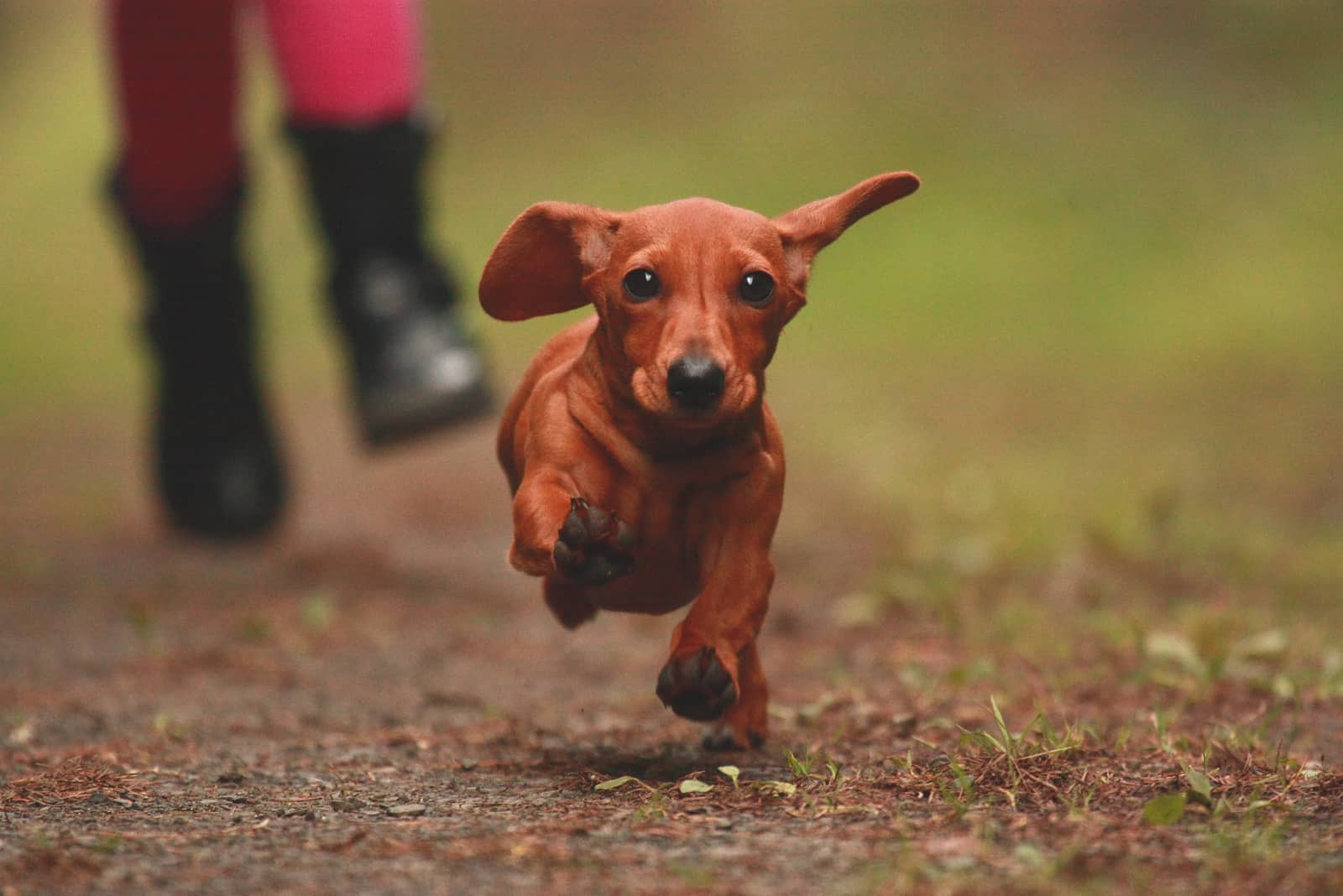
The difference between the three smaller Dachshund breeds is fairly straightforward – they’re all comparatively smaller versions of the same breed, and they all descend from the Standard Dachshund.
The Mini Dachshund is a smaller version of the Standard Dachshund, and the Toy and Teacup Dachshunds are just smaller varieties of the same breed – of course, there is also a difference in how all of these variations are recognized by the American Kennel Club.
What The American Kennel Club Says
The AKC’s Miniature Dachshund breed standard states that dogs of this breed must conform to the following guidelines: they must stand between five and six inches at the withers, and weigh less than 11 pounds.
Doxies come in two officially recognized sizes – the Standard and the Mini Doxie (with toy-sized and Teacup Dachshunds falling under the Miniature category).
They come in three coat types – smooth-haired, wire-haired, and the longhaired Miniature Dachshund.
And, they come in 12 coat colors, which are officially recognized as part of the breed standard – including various coat patterns such as piebald, sable, brindle, and the Dapple Doxie.
The Toy and Teacup Dachshund varieties are much smaller than the Miniature Dachshund, with Toy Dachshunds weighing less than eight pounds, and Teacup Doxies weighing between six and seven pounds.
AKC Classification
The most important thing to note is that Toy Dachshunds and Teacup Dachshunds are not recognized by the AKC as separate Dachshund breeds, and that they’re not allowed to compete in conformation shows like the Westminster Kennel Club Dog Show.
The practice of breeding smaller versions of Miniature dogs (no matter which breed it is) is still fairly controversial, and these tiny designer dogs are still officially categorized as Miniature dogs, no matter how small they might be.
However, given the fact that both Toy and Teacup Dachshunds are technically considered Miniature Dachshunds, Toy and Teacup Doxie owners can register their dogs with the American Kennel Club as purebred Miniature Dachshunds – as long as they are actually purebred.
How Are Toy And Teacup Dachshunds Made?
There are essentially three different methods that breeders use to create Toy and Teacup Dachshund puppies.
The method which is most often used is mixing a Miniature Dachshund with another dog breed that’s even smaller, such as the Chihuahua – however, this results in a mixed breed puppy, and whenever two distinct breeds are mixed, the resulting puppies may inherit both temperamental and physical traits from both parents.
Another way breeders create Toy and Teacup Dachshund puppies is by breeding two purebred Miniature Dachshunds that carry the dwarfism gene – resulting in an even tinier version of the dog.
However, the risk with this particular method is that it usually yields unwanted results – many Teacup Dachshunds that are created via this method end up having even shorter legs, without an overall reduction in body size.
The third possible method that breeders use to create Teacup Dachshund puppies is progressively breeding two purebred “runts of the litter” – by selecting the smallest individual dogs and breeding them, breeders end up with purebred Miniature Dachshunds that can be classified as Teacup Dachshunds.
In reality, any one of these methods will produce a Teacup Dachshund – but each method comes with its own drawbacks and a fair deal of controversy.
1. The Dwarfism Gene Method
Some breeders prefer the dwarfism method over the other two – by breeding two purebred Miniature Dachshund puppies that carry the dwarfism gene, they end up with a litter of small Miniature Dachshund puppies that can be called Teacup Doxies.
Since dwarfism (also called canine chondrodysplasia) is technically a genetic skeletal disorder, the controversy behind this method is tied to the question: is breeding two dogs with a severe genetic disorder ethical just because the end result is so adorable?
Puppies bred via this method can be prone to several different health problems such as painful joint conditions, back problems, slower growth, heart problems, etc.
2. Breeding Runts Of The Litter
Some breeders prefer breeding the smallest dogs in a litter in order to create the tiniest puppies possible, with each subsequent litter in the bloodline becoming smaller in stature.
Of course, the obvious benefit to this method is that the resulting puppies will be purebred Teacup Dachshunds that still retain all of the appealing traits of the breed.
The controversy behind this method is due to the fact that runts of the litter are typically weak, small, and often prone to severe health conditions that influence the health and longevity of their offspring.
At first, these tiny Dachshund puppies might appear fine, but problems are often perceived when the pups become a bit older.
Since Miniature Dachshunds are already prone to a number of health issues such as bladder stones, IVDD (intervertebral disk disease), allergies, diabetes, and pancreatitis – the question remains whether breeding even smaller dogs can be considered ethical in the first place.
This is a practice often seen in puppy mills and backyard breeders that are quite literally in the business of producing as many Toy-sized and Teacup-sized puppies as possible, with no apparent regard for the health of their puppies – the sole apparent reason being monetary gain.
3. Mixing The Miniature Dachshund With Another Smaller Breed
Mixing a purebred Mini Doxie with another smaller dog breed is the easiest, and also the most humane method that breeders use to create Teacup Doxies.
Although free of controversy, this method produces puppies that are no longer purebred Doxies – which could potentially result in puppies that no longer behave like or resemble Dachshunds.
Do Teacup Dachshunds That Are Mixed Have Fewer Health Problems?
It’s simply impossible to predict which characteristics each individual puppy is going to inherit when you mix two different breeds – and there’s a good chance that the puppies won’t even be any smaller, which is a downside to this particular technique.
Contrary to popular belief that purebred dogs are more likely to be prone to inherited health issues because they tend to have less genetic diversity in their gene pool, and that mixed dog breeds are sturdier due to their greater genetic diversity – this has been disproven.
A recent study of 27,254 dogs has shown that both purebred dogs and mixed breeds are equally prone to certain genetic health disorders, with the exception of purebred dogs being slightly more prone to 10 genetic disorders, which include elbow dysplasia, hypothyroidism, cataracts, and dilated cardiomyopathy, among others.
The truth is, whenever you mix two different dog breeds, the resulting offspring is at risk of health concerns that affect either parent dog.
The Most Popular Dachshund Mixes
The most popular breeds used to create Teacup Dachshunds via this method are Miniature Poodles, Shih Tzus, Yorkshire Terriers, Chihuahuas, and Basset Hounds, among others – resulting in all kinds of adorable Dachshund mixes.
Keep in mind that even though it’s possible to create a Teacup Doxie dog via any of these methods, each of them has its own challenges and isn’t without controversy.
Responsible, ethical, and reputable breeders should be trying to preserve the breed standard while improving upon it with each new litter – maintaining strong characteristics, emphasizing health and longevity, and minimizing any potential weakness where possible – not the other way around.
Teacup Dachshund Health Problems
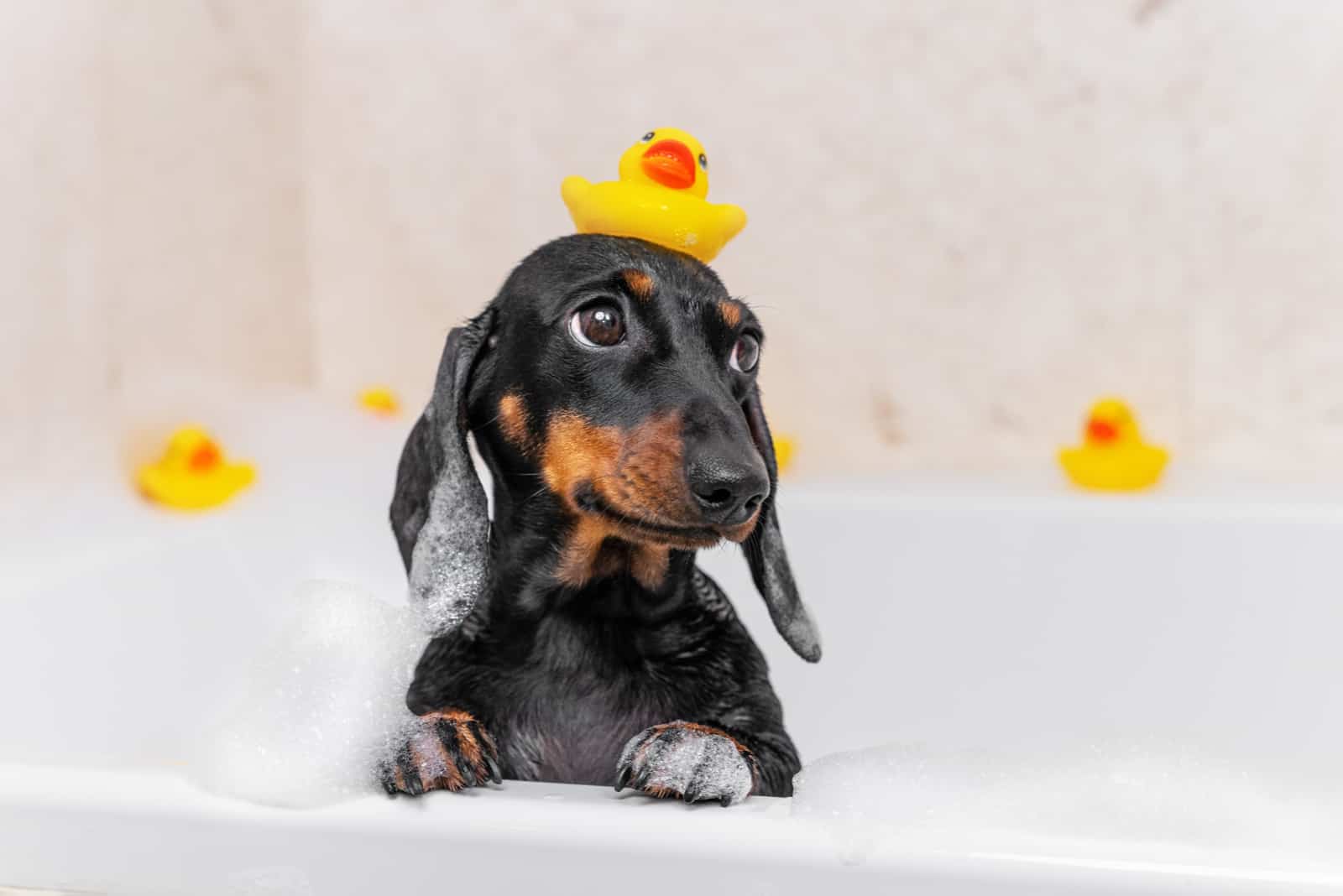
Although the breed has an average lifespan of 12 to 16 years, there are some health concerns that prospective Teacup Dachshund owners should be aware of before committing to a puppy.
Needless to say, Toy and Teacup Miniature Dachshund breeders do not follow the same breed standard that responsible and ethical Mini Dachshund breeders adhere to.
A breed standard for any dog breed is a set of guidelines that ethical breeders adhere to in order to consistently produce uniform and healthy litters of a certain breed.
This uniformity across all individual dogs of a specific breed is what defines the breed and distinguishes it from other dog breeds.
Most backyard breeders and puppy mills who advertise their puppies as Teacup or Toy Dachshunds do so for additional monetary gain – they charge more for puppies that are inherently unhealthier, live shorter lives, are haphazardly bred, and offer no health guarantees.
It’s safe to say that it should be the other way around – purebred, healthy Miniature Dachshunds that adhere to the breed standard, have a pedigree, are microchipped, dewormed, properly socialized, and potty trained, in addition to being given all of their age-appropriate vaccinations should cost more than their less-healthy and smaller counterparts.
That said, let’s take a look at what the most common health concerns are when it comes to Teacup Miniature Dachshunds in general.
Intervertebral Disc Disease
One serious health problem that prospective Teacup Dachshund owners should be aware of is that these dogs are prone to back problems.
Intervertebral Disc Disease is a congenital health problem in all Dachshund dogs, and it is especially dangerous for Teacup Dachshunds.
It’s a hereditary condition that causes severe back pain and partial loss of function and mobility in the limbs – in some severe cases, IVDD can lead to total paralysis and loss of feeling in the limbs.
Dachshund dogs that inherit IVDD are prone to serious back injuries due to their inherently short legs not being able to support their long body – and it’s even more common in Toy and Teacup-sized Dachshunds.
Prospective Teacup Miniature Dachshund owners should do everything they can in order to Doxie-proof their household. Providing a Teacup Doxie puppy with a step ladder it can use to get up and down furniture without having to jump will significantly decrease the chances of injury occurring.
Joint Problems And Eye Problems
Miniature Dachshunds (like most Toy dog breeds) are prone to certain types of joint problems. Patellar Luxation – a hereditary joint problem where the Patella (kneecap) luxates (dislocates), which, in turn, causes mild to severe pain, partial loss of mobility, and can lead to lameness.
Other joint problems that Teacup Miniature Dachshunds are prone to are hip and elbow dysplasia – both hereditary skeletal disorders where there is an abnormal growth or insufficient coverage in a dog’s elbow and hip joints, which, in turn, makes the joint unstable.
If left untreated, joint dysplasia can cause mobility problems, mild to severe pain, lameness, and scar tissue around the joints.
Like most dog breeds, Dachshunds are also prone to certain eye conditions such as cataracts, PRA (Progressive Retinal Atrophy), conjunctivitis, dry eye, eye ulcers, and glaucoma.
Should You Get A Teacup Miniature Dachshund?
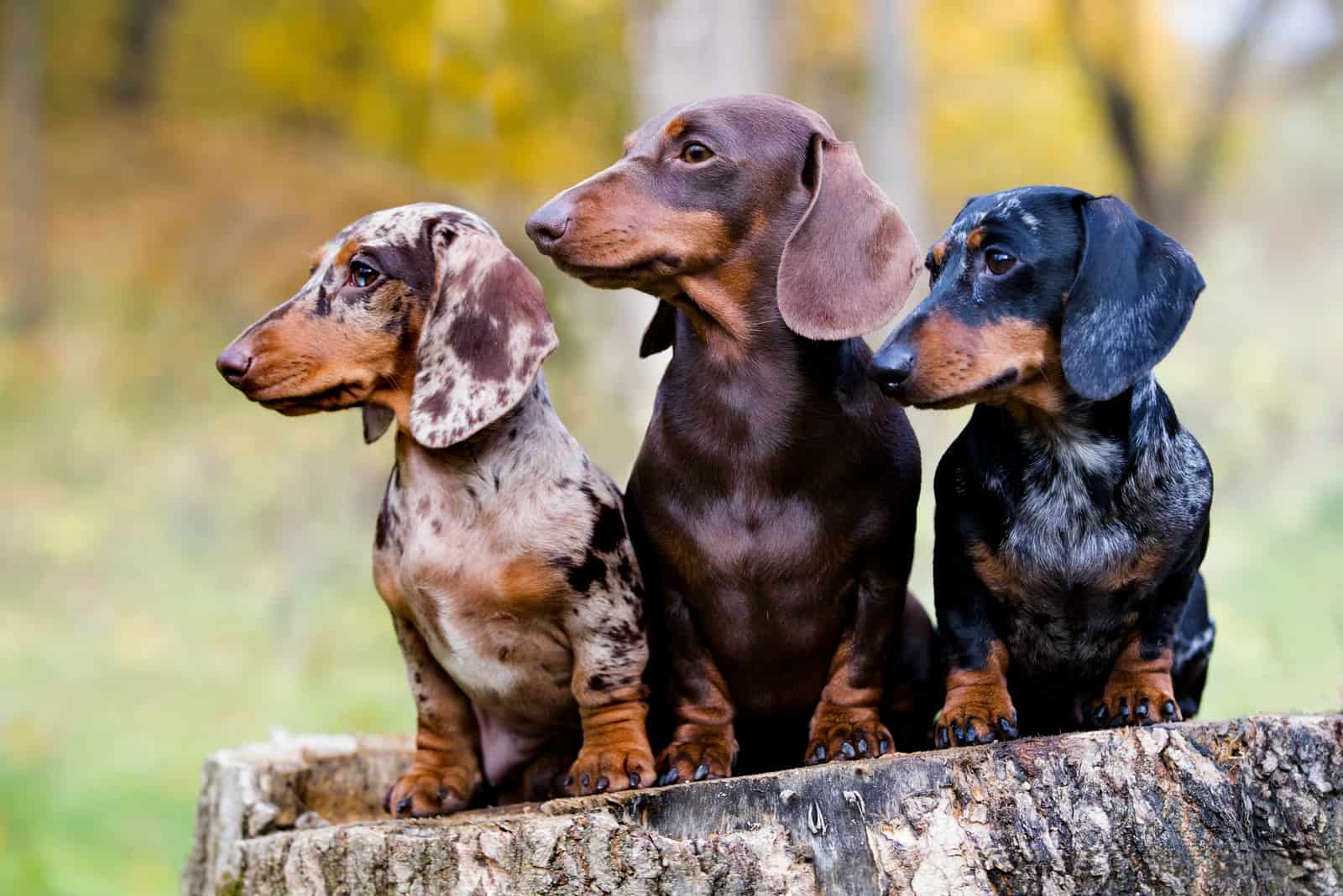
Since this tiny breed is obviously prone to some health conditions, the question remains whether you should buy a Teacup Miniature Dachshund or not.
Apart from hereditary health problems, dogs this tiny in stature are also prone to serious physical injuries – their small frame is fragile, and their bones can break easily if stepped on, dropped from a certain height, or sat on accidentally.
Of course, Teacup-sized doggies are not an ideal choice for families with small children, rambunctious older kids, or other larger pets in the house.
Let’s take a quick look at the pros and cons of owning a Teacup Miniature Dachshund so that you can ultimately decide for yourself if this is the right breed for you.
Pros
Both male and female Dachshunds are affectionate, gentle, obedient, trainable, and intelligent dogs that love to please their owner.
That said, the best way to go about purchasing a Teacup Miniature Dachshund is to opt for a mixed puppy – although the individual puppy’s temperament and physical appearance might not be exactly what you want, mixed Teacup Doxies have a higher chance of living a long and healthy life compared to their runt-bred and dwarvish counterparts.
Of course, you should always try to find a reputable, licensed, responsible, and ethical breeder who offers a health guarantee and has good word-of-mouth references.
You can also opt to adopt a dog that’s in need of a new home by turning to reputable Miniature Dachshund rescues for adoption in the U.S. – or check out your local animal shelter and see if they have any Mini Doxie puppies in need of a new home.
Cons
Apart from the health concerns that Teacup Miniature Dachshunds are prone to, the demand for this tiny dog breed is currently at an all-time high in the U.S. – which, of course, influences the price tag of each individual puppy.
It’s not uncommon for breeders to charge thousands of dollars for a Teacup Miniature Doxie, and taking into account what we’ve previously mentioned in relation to the high price tag for this tiny breed – the prices are mostly overblown compared to what you get in return.
The truth is – if you’re not prepared for additional costs such as food, toys, accessories, and a lot of vet bills, not to mention the sheer amount of heartbreak you have to be ready for if your dog becomes seriously ill – you might want to opt for a different breed.
Dachshunds are also not hypoallergenic dogs, although they don’t shed excessively – they’re also known for sometimes being too clingy, so prospective owners should research what it’s like living with a Dachshund prior to committing to a puppy.
Ultimately, it’s your personal decision and your responsibility if you decide to buy a Teacup Miniature Dachshund puppy for yourself – but you should do your research and weigh the pros and cons before committing to one.
Is Breeding Teacup Miniature Dachshunds Ethical?
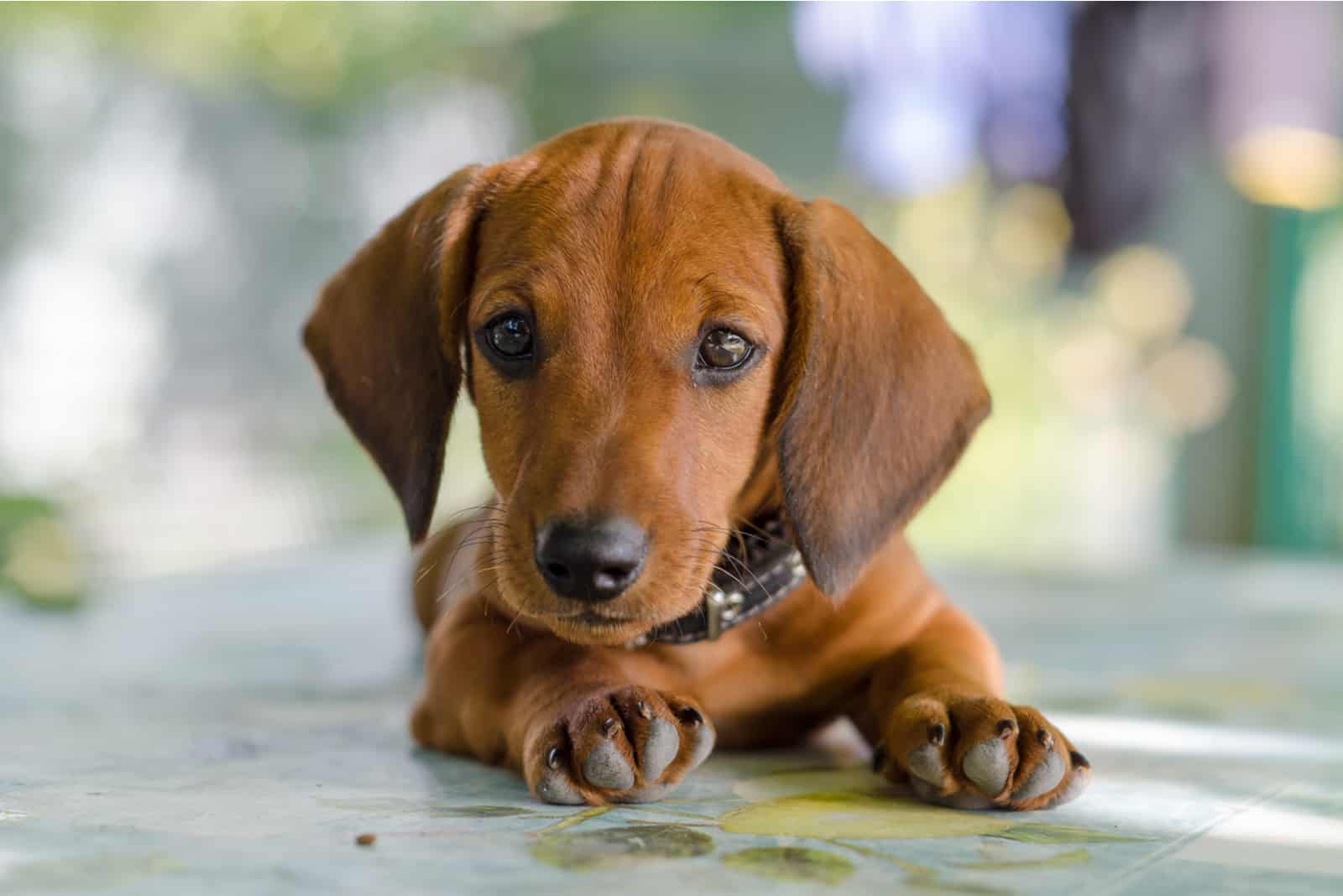
Since Toy and Teacup Doxies are not officially acknowledged by the American Kennel Club, and there are no breeding regulations in place – the question remains whether breeding any sort of Teacup dog can be considered ethical by today’s standards.
While it’s technically legal to breed Teacup dogs, the question of whether or not it’s ethical is more complicated, and like most polarizing topics – it depends on who you ask.
The breeding methods in question are highly controversial, and are not in coherence with reputable breeding practices that most ethical dog breeders adhere to.
The truth is – the term ‘Teacup’ was created by backyard breeders who produce substandard Miniature Dachshunds of an improper size that don’t adhere to the breed standard.
Most, if not all of these self-proclaimed breeders, argue that they love and respect the Mini Doxie breed – but the truth is if you love a certain breed, you only want what’s best for it, not the other way around.
What’s safe to say is that even though the popularity of Toy and Teacup-sized dogs is ever-increasing, so is the controversy associated with it.
Ultimately, you need to be the judge and decide whether or not this breed is the right one for you, and whether or not you can live with the consequences of any potential health problem arising.
In Conclusion
To recap what we’ve learned about the Teacup Miniature Dachshund, we’ll give you a quick overview of the breed.
The Teacup Miniature Dachshund is not a separate breed in itself, but is actually a smaller version of a purebred Miniature Dachshund, and although they can be registered with the AKC, the AKC itself does not officially acknowledge the Teacup Dachshund as a separate breed.
Sure, Teacup dogs might take up less space, require less exercise, consume less food, and love equally as much as larger dog breeds – but a serious downside to owning a Teacup Miniature Dachshund dog is that they’re often prone to certain health problems mainly due to the fact that they’re so small.
It’s your personal decision whether you decide to buy one or not… just make sure to do your research and only purchase a dog from a reputable and reliable breeder who knows what they’re doing – and be ready for a lot of Dachshund barking.
If you’re on the fence about deciding, why not opt for a purebred Miniature Dachshund that’s small enough as it is – they’re excellent watchdogs, affectionate with their owner, and are overall healthier than their Toy and Teacup-sized cousins.
Related Articles:
• 14 Best Harnesses For Dachshunds – Top Products For Your Sausage Dog
• 16 Best Toys For Dachshunds – Toys For Playtime With Your Doxie
